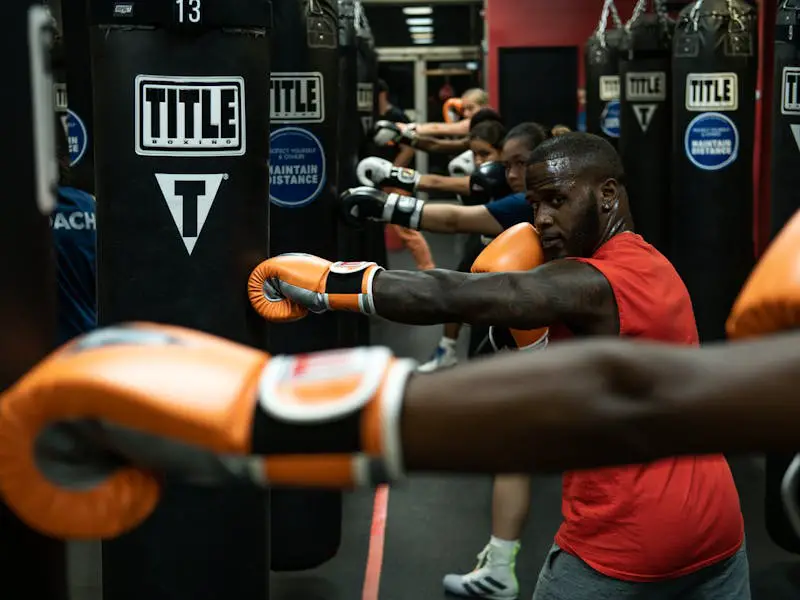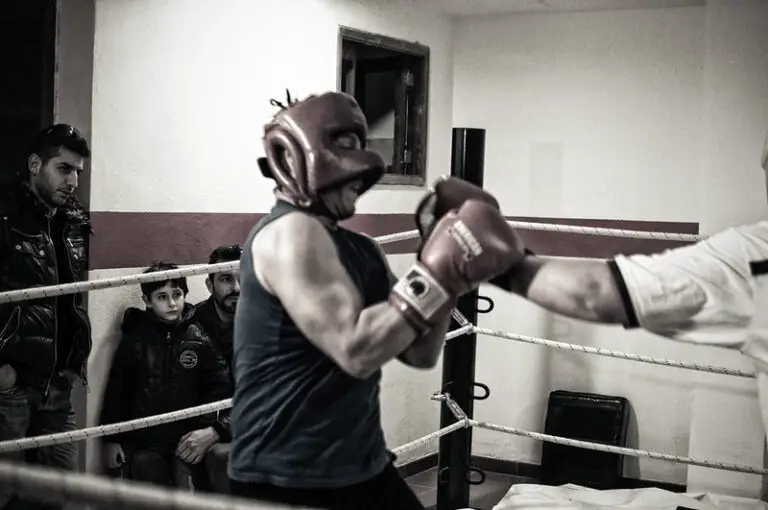The demand for boxing classes has never been higher. Still, the concerns are also the same — is boxing dangerous for beginners, and how much?
With 1 injury per 772 hours of training time, boxing training carries a lower risk of injuries than most other conceptually similar striking sports. Most common training injuries are related to wrists, arms, and shoulders, while head injuries are usually reserved for senior students.
Let’s further examine the official studies related to the dangers of boxing for beginners, common injuries, and how to prevent them.
How Dangerous is Boxing For Beginners (Injury reports)
Boxing can be dangerous because it involves full-contact striking to the head and upper body area above the waist. The majority of beginner injuries are related to their hands, arms, shoulders, and of course, head.
One study conducted by Smith et al. (2016) found that the injury rate for amateur boxers was approximately 12.8 injuries per 1,000 hours of training. In comparison, Muay Thai (13.5) and MMA (15.3), have around the same and even higher. But a more detailed comparison comes later in this article.
Another study reports boxers suffer 1 injury per 772 hours of training time. The most common injuries are limb sprains and strains, but facial lacerations or concussions are also not uncommon.

Though the injury rate is not too high, do not enrol in classes thinking you won’t get hurt. In simple words, it’s not a matter of whether you are going to get hurt. It’s about when and how badly. Injuries of some type are almost inevitable if you stick with it for long enough.
In the end, this is a combat sport where people strike each other, often with full force.
On the other hand, the pro-boxing world is far more dangerous. For instance, a study by Johnson et al. (2019) reported a higher rate of 17.5 per 1,000 hours of training among professional boxers. The other study suggests that 90% of all pro boxers suffer a concussion in their careers.
Most Common Injuries in Boxing
A study by Bledsoe et al. (2018) reported that hand injuries accounted for up to 30% of all boxing injuries. Furthermore, a study by Lystad et al. (2018) found that head injuries accounted for approximately 64% of all injuries sustained by professional boxers.
Some of the most common boxing injuries include hand and wrist injuries, such as fractures and sprains. The reason is obvious – beginner boxers often hurt their hands because they have yet to improve their form and learn how to control power. A full-blown shot that lands at a wrist angle can easily result in some type of injury, usually a small one.

Next, injuries to the shoulders, elbows, and knees, such as dislocations and ligament tears, are frequently reported among beginner boxers. If not properly treated, these injuries cause chronic pain, joint instability, and limitations in range of motion. Or if not treated on time, develops into a more serious injury.
Head injuries, including concussions and facial fractures, are also common due to the nature of the sport. However, these injuries come into play during the advanced stages of learning as beginners do not engage in hard sparring. Or at least they shouldn’t be sparring hard while at the beginner level.
Understanding these factors is crucial in improving the safety of training. Speaking of which, let’s see how you can make your boxing experience safer.
How To Prevent Beginner Boxing Injuries
Boxing training can be safe and there is a lot of practitioners can do to minimize the risks of training. Wearing protective gear and controlling the intensity is most important as the majority of boxing injuries happen due to poor technique execution or lack of gear.
Following is a list of ways you can prevent injuries as a beginner
- Proper Warm-Up – Begin each training session with dynamic stretches and light cardio exercises to increase blood flow and prepare the muscles for intense activity.
- Protective Equipment: Emphasize the use of proper protective gear. This includes wearing gloves, mouthguards, headgear, and hand wraps, to minimize the impact of punches and protect vulnerable areas.
- Avoid hard sparring — as a beginner, you should stay away from hard sparring in the first 6 months. Live drills, tag sparring, and light contact sparring are fine. But do not participate in gym wars.
- Rest and Recovery —give your body enough time to rest and recover between boxing training sessions to prevent overuse injuries and promote muscle repair.
- Strength Workouts – incorporate strength training exercises to build overall body strength, focusing on core stability, upper body strength, and lower body power.
- Proper Technique — emphasize the importance of learning and practising correct boxing techniques to avoid unnecessary strain on muscles and joints.
- Stretching — encourage regular stretching routines to improve flexibility and reduce the risk of muscle strains or tears during training or fights.
By following these guidelines, beginner boxers can reduce the risk of injuries and focus on learning. Remember, safety should always be a top priority to enjoy the sport while minimizing risks.
What Makes Boxing Training Dangerous?
Boxing as a concept is dangerous because it includes a high rate of strikes to the head. Training is intense and hard on your body, notably the hands and shoulders due to repeated punching, and other reasons such as:
Overtraining
Boxers may push their bodies to the limit through rigorous training regimes, leading to overtraining syndrome. Then, overtraining can result in muscle fatigue, decreased performance, and weakened immune function. This then may lead to more serious conditions such as muscle tears, ligament injuries or illness.
Develop a balanced training program that includes a mix of cardio and strength training, skill development, and recovery sessions. Next, include rest days or active recovery days in your weekly schedule to give your body time to recover.
Lastly, always start your training sessions with a thorough warm-up to prepare your muscles and joints for the intense activity. End each session with a proper cool-down, including stretching, to help reduce muscle soreness and improve flexibility.
Head Strikes
The primary objective in boxing is to land punches on an opponent’s head or body. As a result, students and competitors absorb a lot of head damage both in sparring and matches, and the cumulative effect may have a big impact on their health.
The brain is surrounded by fluid, but when a sudden impact occurs, the brain can move and collide with the inside of the skull, causing injury. The most common one is a concussion which can lead to symptoms such as dizziness, confusion, headaches, and memory loss.
Lack of Concussion Protocols
Unlike some other contact sports, boxing may lack standardized concussion protocols and guidelines for identifying and managing head injuries. The absence of proper concussion protocols increases the risk of undiagnosed or untreated concussions, potentially leading to more severe consequences for the athletes involved.
Can You Learn Boxing without Sparring?
Yes, it is possible to learn boxing without engaging in sparring, and many people do so, especially when starting due to the fear of sparring and other reasons. However, this approach comes at a certain cost as learning advanced techniques and becoming a pro-boxer requires proper training under supervision.
Learning boxing at home and alone is possible as long as your goal is to master the basics. This includes the correct execution of techniques, movement, blocks and hand speed. Training this way also allows you to improve your fitness and get in shape.
However, you will need proper training if your goal is to learn how to fight. Sparring is essential when it comes to developing timing and reactions, and learning how to stay calm in a fight. It is almost impossible to learn how to apply boxing techniques in real combat without sparring on a regular basis.
How To Learn Boxing Quickly? (Expert Tips)
Final Thoughts — Is Boxing Safe For Beginners
Overall, boxing training is safe for beginners as long as you are training in a legitimate school that prioritizes the safety of its students. Also, you have to focus on taking the right approach to minimize the risks as much as you can. This includes wearing protective gear, emphasizing technique, and focusing on taking it step by step.
If you are a beginner, do not try to fast-track your progress. Always work with people who share a similar level of experience, and listen to your coaches. Wear the gear whenever you do anything that may get you hurt, and avoid gym wars.
Always remember that sparring is a teaching method, not a real fight or match. There is no winning or losing, only lessons an individual needs to learn.


